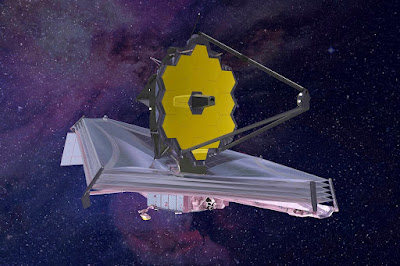NASA's James Webb Telescope Could Detect Alien Civilizations From Air Pollution
A Cornell study suggests that NASA's James Webb Telescope could search for industrial pollutants in the atmospheres of exoplanets.
The deployment of NASA's James Webb Telescope will serve to analyze our Universe in situations never seen before. One of them would be the detection of alien civilizations based on air pollution.
At least this is what a study published by Cornell University suggests, done by the Blue Marble Space Institute of Science in Seattle. The research is called Detectability of Chlorofluorocarbons in the Atmospheres of Habitable M Dwarf Planets.
According to Jacob Haqq-Misra and his colleagues, the Webb Telescope could detect chlorofluorocarbons in the atmospheres of possibly habitable exoplanets. This, in the same way that we are identifiable on Earth, based on these industrially released CFCs, such as refrigerants and cleaning agents.
CFCs caused a hole in the Earth's ozone layer, a level that dropped markedly in the late 1980s.
"They are a remarkable example of a technosignature on Earth, and the detection of CFCs on a planet (for example) like TRAPPIST-1e would be difficult to explain through any biological or geological features that we know of today," the researchers say.
"Our civilization continues on a path of growth in both population and energy consumption, while we are just beginning to understand the extent to which our technology could be detectable at astronomical distances."
Add Haqq-Misra and his colleagues that "the continued exploration of how the past, present and future of civilization will affect the detectability of the Earth, remains an important goal to understand the prevalence of biosignatures and technosignatures in our galaxy."
In addition to Haqq-Misra, Ravi Kopparapu, Thomas Fauchez, Adam Frank, Jason Wright and Manasvi Lingam worked on developing the theme.
The alignment of the mirrors of NASA's James Webb Telescope
NASA's James Webb Telescope was launched on December 25 from Guyana, and is already in the process of aligning its mirrors at the second Sun-Earth Lagrange point, known as L2, 1.5 million kilometers from our planet. .
Recently, the North American aerospace agency continues to improve its alignment, based on the reflections of the star HD 84406.
On February 11, they sent a mosaic of images of the star located in the Ursa Major constellation, and several days later they published a second mosaic, where a significant improvement in the details of the star can be observed.
It is expected that by the summer of 2022 NASA's James Webb Telescope will be in the most optimal conditions to begin its investigations in deep space.
 Main Page
Main Page

Comments